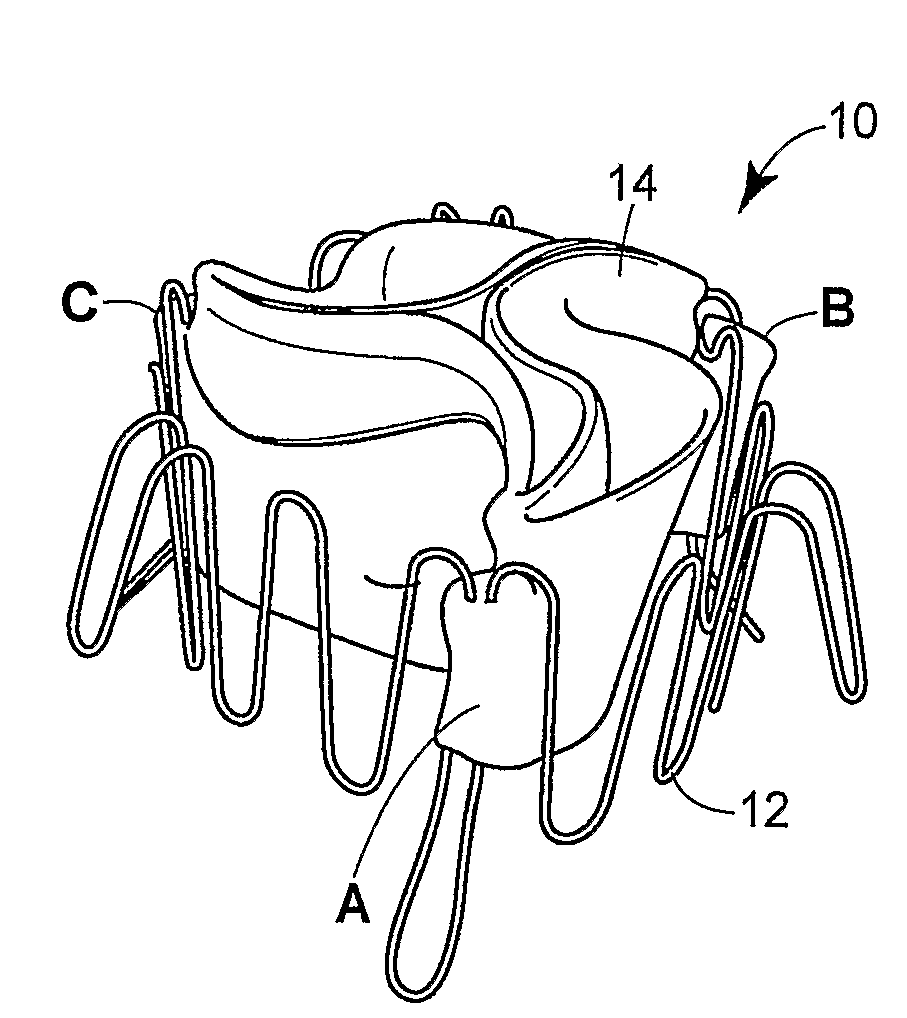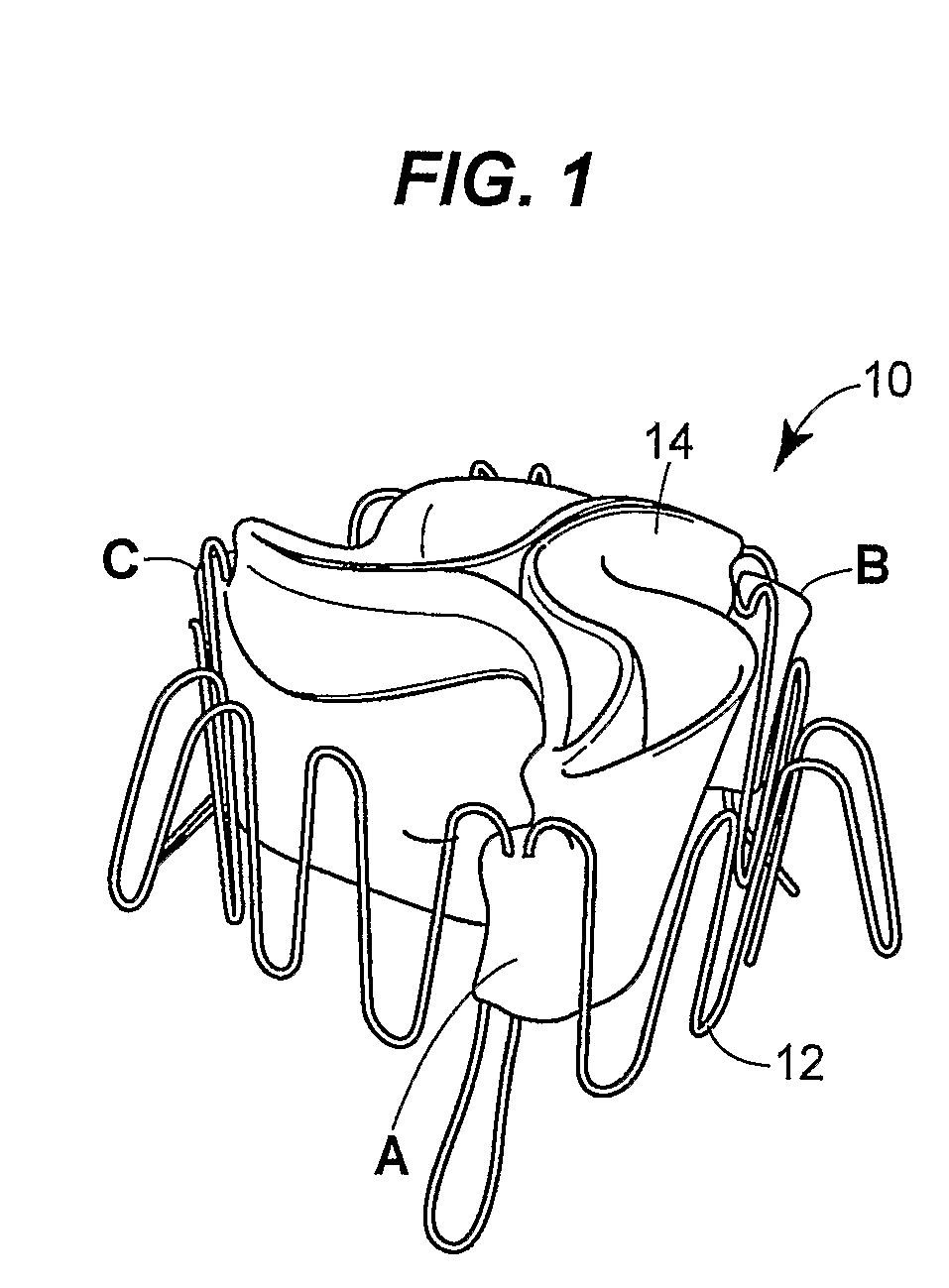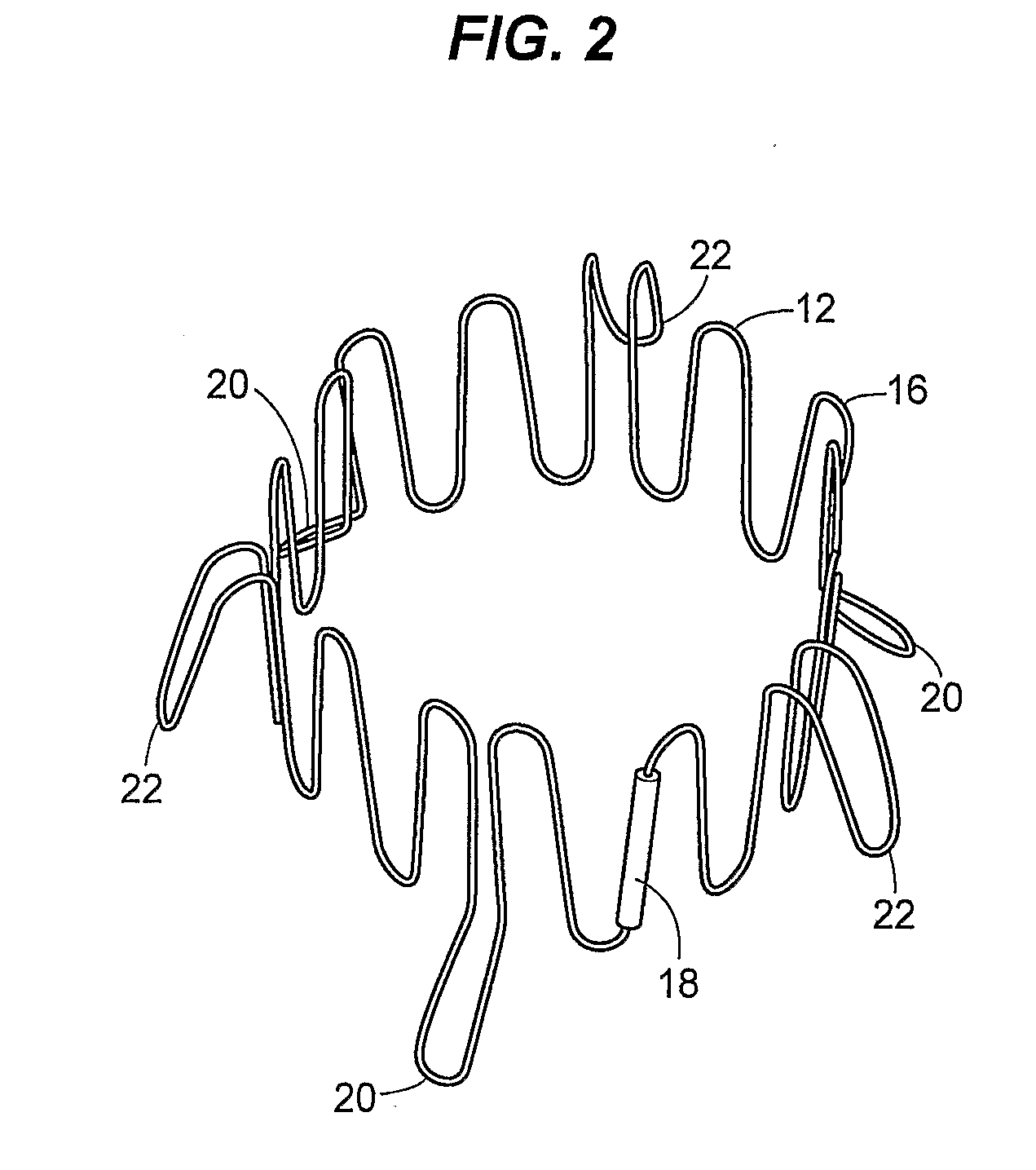Collapsible Heart Valve with Polymer Leaflets
- Summary
- Abstract
- Description
- Claims
- Application Information
AI Technical Summary
Benefits of technology
Problems solved by technology
Method used
Image
Examples
Embodiment Construction
[0065]The Catheter Based Heart Valve (CBHV) includes a stent and two or more leaflets attached to the stent. The stent provides structural support for the leaflets and keeps the CBHV in place in the aortic root, while minimizing obstruction of the coronary flow.
[0066]As shown in FIG. 1, the CBHV 10 includes two basic components, the stent 12 and one or more leaflets 14. The configuration shown in FIG. 1 forms an adaptable stent geometry without the need for extended sutures connecting the leaflets 14 to the stent 12. The leaflets 14 are attached to the stent 12 at three locations A, B, C. The CBHV 10 takes on a generally cylindrical shape for insertion into a vascular structure. However, the stent 12 is radially deformable and partially collapsible, due in part to the spring-like configuration of the stent 12. Thus, the stent 12 is suitable for insertion via a catheter and will form itself to the vessel shape into which the stent 12 is placed. This feature is especially beneficial f...
PUM
 Login to View More
Login to View More Abstract
Description
Claims
Application Information
 Login to View More
Login to View More - R&D
- Intellectual Property
- Life Sciences
- Materials
- Tech Scout
- Unparalleled Data Quality
- Higher Quality Content
- 60% Fewer Hallucinations
Browse by: Latest US Patents, China's latest patents, Technical Efficacy Thesaurus, Application Domain, Technology Topic, Popular Technical Reports.
© 2025 PatSnap. All rights reserved.Legal|Privacy policy|Modern Slavery Act Transparency Statement|Sitemap|About US| Contact US: help@patsnap.com



